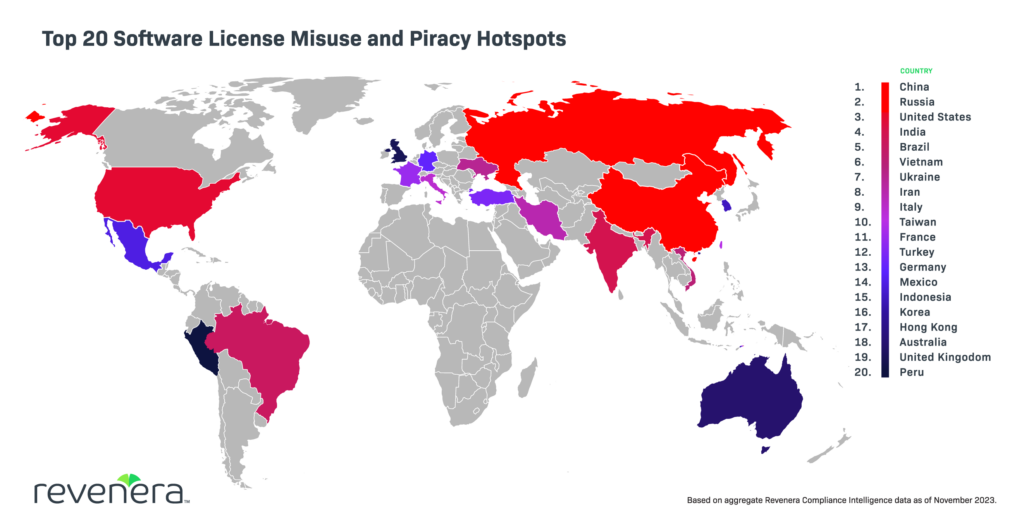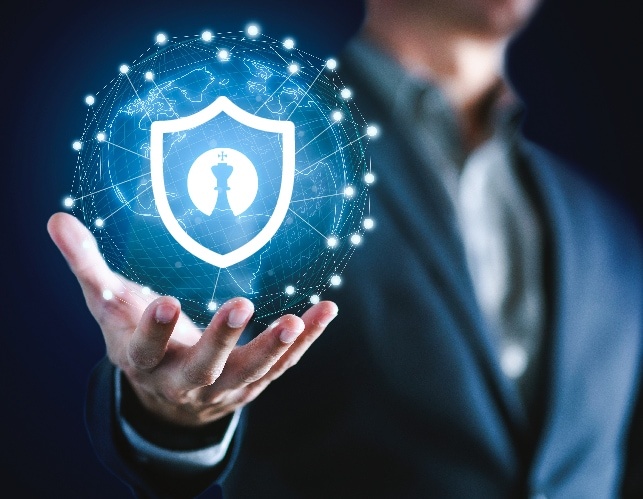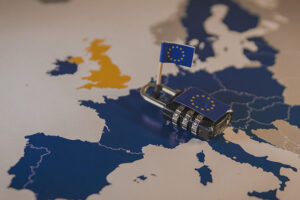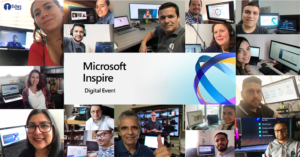The Off-Limits of Brand Protection Top Challenges
When talking about Brand Protection, we need to have a clear understanding of some key problems impacting governments and many industries, so we can comprehend the Off-Limits of Brand Protection Top Challenges.
Counterfeiting and Piracy – Terms used to describe a range of illicit activities linked to intellectual property rights (IPR) infringement; including but not limited to, trademarks, copyrights, patents, and design rights. Both are federal and state crimes, involving the manufacturing or distribution of goods under someone else’s name, and without their permission.
Brandjacking – Unauthorized use of a company’s brand.
Brand Abuse – Includes illegitimately impersonation and misrepresentation, false advertisement, and claiming affiliation with a trusted brand.
Gray Market or Parallel Market – Refers to products traded outside authorized manufacturer channel.
Direct link between counterfeiting and organized crime and terrorism – counterfeiting not only has serious direct consequences for industries, brands, consumers, governments and economies, but also often supports other criminal activities, including organized crime groups around the world. According to the US Customs and Border Patrol; beyond issues of intellectual property theft and consumer safety, there is the notion that counterfeit sales directly fund terrorist organizations. Federal Bureau of Investigation and Interpol seizure records suggest that millions of U.S. dollars in proceeds from counterfeit goods (e.g., high-end and luxury automotive parts, and cigarettes) have been destined for terrorist organizations.
The Problem
Counterfeit products range from high-end consumer luxury goods such as watches, perfumes or leather goods, to business-to-business products such as machines, software, hardware, medical devices, chemicals or spare parts, to common consumer products such as toys, pharmaceuticals, cosmetics and foodstuffs. In fact, any IP-protected product can be counterfeited.
For example: counterfeit goods jeopardize consumers and pose a serious safety risk, such as, fake toys contain hazardous and prohibited chemicals and detachable small parts; brake pads made of compressed grass; counterfeit microchips for civilian aircrafts; all of these already have led to injuries and deaths.
Brand Protection Top Challenges
I participated in a Brand Protection event last October in Orlando, FL, where many big brand names, and customs enforcement agencies from different countries shared their experiences, challenges and successes. Here are the key takeaways as the top challenges:
- Intellectual Property is not a priority in some countries and IP laws are misinterpreted. Many countries around the world barely pay attention to IP rights. They claim three items:
- they have other higher priorities to take care of, such as; internal corruption, drugs and human trafficking, terrorism, and pollution
- they don’t have, time, budget and resources dedicated to IP
- they really don’t care
- Penalty for infringement is very low or null in some countries. There are many countries around the world were an infringement legal process is not penalized or may receive a very minimal sentence. This is a result of our next challenge on the list.
- Litigation process fails, as Judges are not strong managing these cases in many countries. Pending upon the country, litigation cases for infringement are dismissed due to lack of expertise.
- Enforcement agencies in some countries are not fully supported by their government. According to some countries law enforcement agents, their governments do not see IP as a priority, mentioned in point #1 above. They concentrate their efforts on drugs and arms dealers, anti-terrorism, and human trafficking, among others. A few mentioned they see counterfeited products all the times, but if, neither the brand press charges nor the government support them, they do not execute any enforcement intervention.
- Governments lose the tax revenues generated by legitimate businesses and may find it more difficult to attract investment when illegal competitors undermine the market. Counterfeiters are increasing their sales, which results in a direct impact to brand’s revenues. For example; the Software industry remains losing sales due to illegal practice. There is a report on piracy adoption related to unlicensed software showing the following:

Source: https://www.revulytics.com/blog/infographic-2019-revulytics-software-piracy-statistics
- Fake goods are destroying brand reputation, consumer trust and business sustainability. The trade in fake goods is booming and is affecting the sales and profits of the firms. It impacts governments, business in general, and consumers. It cuts revenues and reduces economic well-being, health, safety and security. Also, brand’s social responsibility may be jeopardized, as many companies have disclaimed in their selling contracts, “if the products are sold outside their distribution channels, the company is not responsible for any damage or harm to the user”. In the case of healthcare, imagine that a hospital or a clinic is using a counterfeited IV solution, or IV pump machine that is not calibrate up to specs. Even more, a glucose monitor system where even the machine and/or the paper strips are not legitimate. This will result in a potentially high risk life threatening situation, as the calibration may be off and the person may get a reading of an extremely high or low glucose, resulting in the person injecting a high dosage of insulin to lower the glucose, and may result in a diabetic shock (hypoglycemia). In the case of an extremely low reading of glucose, the person may start consuming foods and beverages high in sugar and may end up in a life-threatening dehydration and coma (Hyperglycemic).
- Growing consumer health and safety problems causing increase in diseases and even death due to counterfeited products. Examples in pharmaceutical, medical devices, and agricultural industries
- In pharma – typical counterfeited prescription drugs are those used in cancer therapy, HIV, erectile dysfunction treatments, IV solutions, and antibiotics, among others. These medications:
- contain an active agent other than the one specified
- contain the correct active agent, but at a dosage that is too high or too low
- have no active agents (more like a placebo)
- contain a contaminated agent
- are wrapped in fake packaging, and/or contain falsified patient information
- have manipulated expiration dates
- In medical devices – from bandages and gauze to contact lenses, spinal implants, breast implants, and even dialyses pumps, IV parts, endoscopy equipment, and portable X-ray machines, among others.
- In agricultural – counterfeit and adulterated fertilizers, animal nutrition products and pesticides that are damaging the crops, contaminating animals, making the fertile land barren (impacting local economy) and most importantly threatens the consumers’ health, as is part of our daily food.
- Supply chain traceability is damaged by some countries’ customs corruption. During the event this topic was repetitive from US Homeland Security and other countries customs agencies. The common statement: “It’s very difficult to track some shipments due to the high corruption levels.” A good solution to this point is to embrace blockchain technology, but this will be discussed in another article.
- High cost to dispose counterfeited products. This involves storage and a sound environmental discarding. For example; the disposal of counterfeit chemicals and pesticides that present serious environmental and health risks, can be costly and technically complex. Also, the composition of certain counterfeit electronic devices is often not known, making it very difficult to determine the best means of disposal. Challenges are, that many countries do not have the necessary infrastructure or technical know-how to dispose of these substances safely.
- Grey market continuous growth. Gray market vendors may be unauthorized to sell those items or may not have permission to offer products in a specific country or region. Let’s take a computer or a server for example: This unauthorized activity has long been a problem for OEMs (original equipment manufacturer), which can lose significant revenue and margin from price erosion, as well as improper sales and marketing discounts and potential brand reputation risk. For the customer, the typical impact is on lack of warranty coverage and inadequate customer service.
- Lack of dedicated resources, expertise and a trusted and scalable solution provider. We have heard in many instances that some companies have their own team to cover this, however, they are limited, or they don’t have the proper tools to increase to the effectiveness levels expected by the brand. That’s where Echez’s expertise comes in to help.
The Solution
Many of the examples shared here are part of our daily findings, across our 24/7 universe analysis using our top-notch business intelligence and analytics search engines.
Echez Group has experts in this arena, covering many industries in a global level. Also, we have in our portfolio a Blockchain practice that helps to manage the activities from automating contract compliance between entities via smart contracts to tracking products from manufacturing to distribution and ultimately to the final sale.
Felix García, Vice President of Business Development with Echez Group
Contact us at info@e-chez.com to help your company to be protected.








